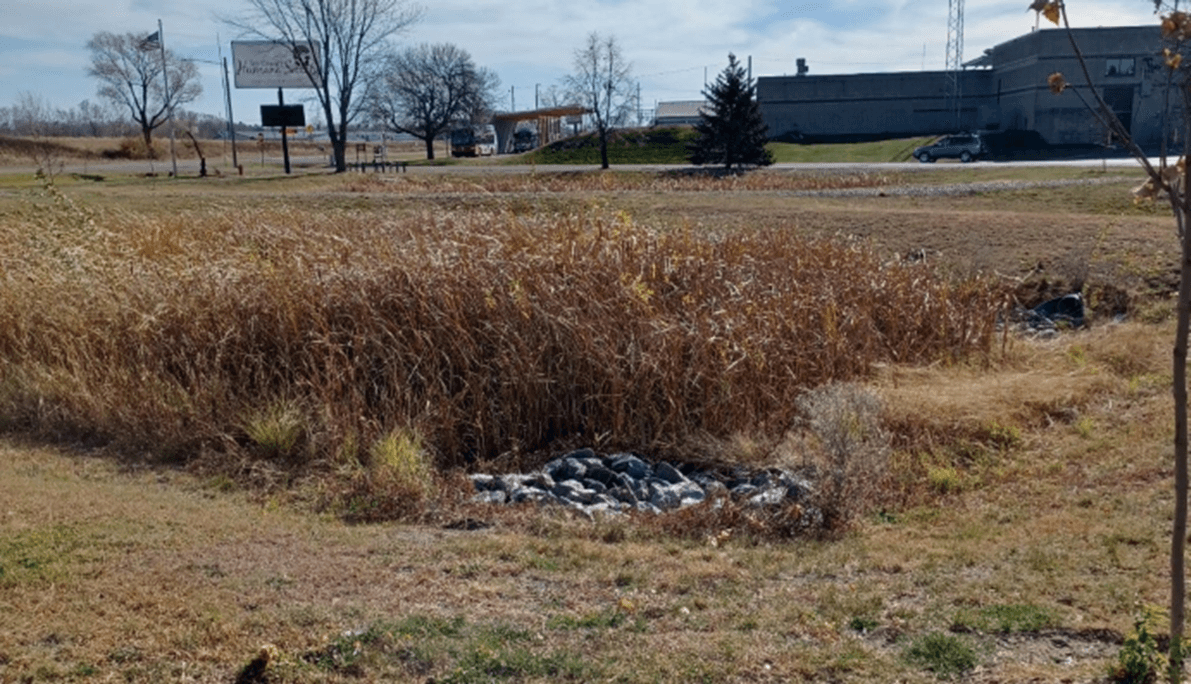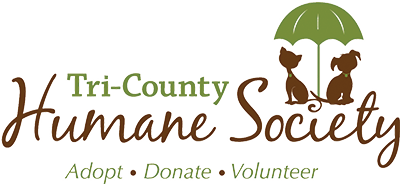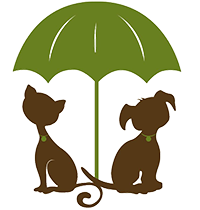
Spring is in the air! After a very cold winter with record inches of snow, we are ready to spend more time outdoors soaking up the sun. Here at TCHS we always have lots of furry friends inside looking for new homes. But have you thought about the animals and plants outside the shelter that make TCHS a part of the local ecosystem?
Our drainage pond was created when we built the new shelter, it sits where the old building stood for a whopping 32 years! Usually, people don’t pay much attention to ditches and drainage outside buildings, but we think there's stuff worth pondering about our ponds. It helps protect our parking lot from flooding and is replenished by rainwater and snow-melt runoff.
These past three years since we moved into our newer shelter have seen the pond sprout with a population of Minnesota’s native broadleaved cattail. A study done at Cornell University in 2021 determined that cattail roots harbor tiny microorganisms that help remove heavy metals from the soil and then filter the water! This helps prevent pollution from spreading into our local waterways.
The cattails and pond also provide homes and food for a variety of amphibians, birds, and insects.
Pest control
During evenings in the upcoming months, we can look forward to hearing Spring Peepers, Northern Leopard frogs, and American toads happily serenade us as they try attracting a partner. These hoppy fellows provide pest control by eating mosquitoes, gnats, and flies that pop up around our back kennels. We gave the frogs a home and they came ready to work!
The cattail roots and grass on the lawn are a great source of food for Canadian geese who come to raise their fluffy goslings here. Mallards and wood ducks love paddling around the pond and leading their babies on the dog walking trails. The cattail stalks are home to Red-Wing Blackbirds. The males perch on the maple and spruce trees out front to loudly sing and compete for territory. They build nests by weaving tiny bits of grass, feathers, and cattail reeds into a cozy cup to lay eggs. The females have less flashy coloring than the males; their brown and cream coloring helps them stay unnoticed by predators so they can raise chicks in peace.
Bird-watchers
The pond isn’t the only place you’ll see wild birds on our property. You might notice when you come inside that cat rooms have lovely windows letting in sunlight for cats to nap in. But have you noticed the bird feeders outside the windows? We keep those stocked with black-oil sunflower seeds that feed a variety of birds and squirrels all year round and keep our cats very entertained! During just the month of December we saw Northern Cardinals, Chickadees, Dark-eyed Juncos, Crows, American Robins, and Blue Jays at the sill. These feathered fellows team up with the amphibians in the pond by also eating lots of insects that might bug our animals and customers.
We love our neighbors!
We at TCHS would like to extend a warm thank you to the plants and animals on our property that enrich our lives and environment. We look forward to a productive spring of many adoptions and of hearing the birds sing again! We invite our patrons to come take a stroll on our dog walking paths, peek at our pond, and join us in celebrating the local ecology of TCHS.
Cassidy Morris is a Customer Service and Animal Care Staff Member at TCHS. She also is one of our nature enthusiasts.
Note: Part of this article referred to “Controlling Cattails” by Cornell Cooperative Extension, 2021.









